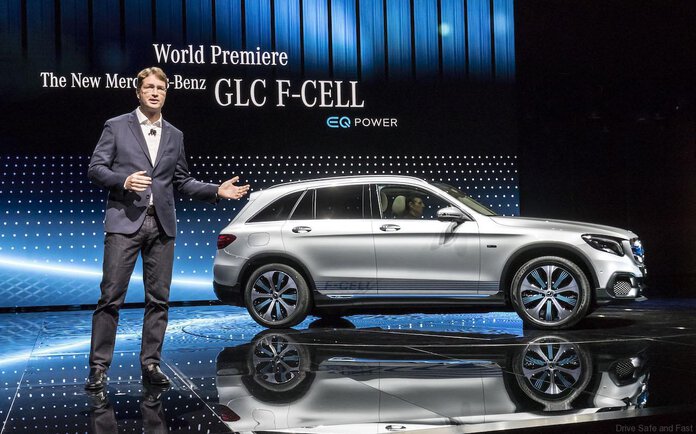Mercedes-Benz at Frankfurt had more than new cars and SUVs to quench the thirst of buyers in all their markets (including Malaysia). It was the world première of the first, fully electric EQ concept vehicle within the compact car segment.
With its “EQ” brand Mercedes-Benz will in future also offer compact vehicles with electrically driven power units to consequently make electromobility available for an important target group. A fuel cell plug-in hybrid vehicle made its first ever appearance at the event, the ‘Mercedes-Benz GLC F‑C ELL’. This all new vehicle combines practical advantages such as a long driving range and short hydrogen fuelling times with locally emission-free driving.
This latest electric model (destined for subsequent series production) from the Mercedes-Benz is set to combine innovative fuel-cell and battery technology in the form of a plug-in hybrid: in addition to hydrogen, the all-electric variant of the popular SUV will also run on electricity. Intelligent interplay between battery and fuel cell, along with short refuelling times, will in future make the GLC F-CELL a vehicle of high everyday practicality and also suitable for long-distance motoring. With 4.4 kg of hydrogen on board, the preproduction model produces enough energy for a range of up to 437km in the NEDC. F-CELL drivers will also benefit from a range of up to 49km in the NEDC thanks to the large lithium-ion battery. An output of 147kW guarantees both dynamic performance and locally zero emissions driving pleasure.
But if course, for this vehicle and more like it to succeed, infrastructure is key and Mercedes-Benz is already working for a nationwide (Germany first, then rest of the modern world) infrastructure is essential for the success of electric mobility. The spread of both charging stations and hydrogen filling stations is proceeding apace around the world. Whether at home, at work, on the road or when shopping: there are various ways to supply electric vehicles with power. Also when it comes to H2 infrastructure, progress is constantly being made. Together with its partners in the H2 Mobility joint venture, Daimler has already drawn up a concrete action plan. The network of H2 filling stations is scheduled to reach 100 by the end of next year. By 2023, there will be a network of up to 400 hydrogen filling stations. Similar infrastructure projects are being promoted in Europe, the USA and Japan.
